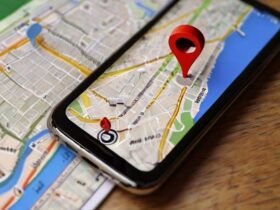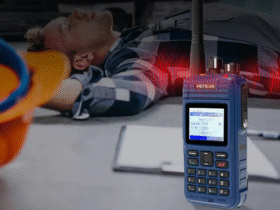Murphy’s Law seems particularly cruel when it comes to mobile phone batteries – they inevitably die at the most inconvenient moments. Picture this: you’re halfway through navigating unfamiliar streets, about to make an urgent call, or attempting to pay for your coffee when your screen goes black. Traditional power bank solutions often prove too bulky for everyday carry, whilst magnetic power bank options offer portability but limited capacity. The reality is that modern life demands reliable backup power, and understanding which emergency charging solutions actually work can mean the difference between connectivity and complete disconnection when you need your phone most.
Solution 1: Magnetic Power Banks – The Instant Charging Lifesaver
The magnetic power bank represents perhaps the most practical advancement in emergency charging technology. Unlike traditional charging methods that require fumbling with cables, a magnetic power bank attaches instantly to compatible phones, enabling one-handed operation whilst maintaining full device functionality.
Capacity selection requires careful consideration of your usage patterns. A 5,000mAh magnetic power bank provides sufficient power for daily emergencies, delivering roughly one full charge to most smartphones. Heavy users should consider 10,000mAh variants, which offer extended charging sessions but at increased weight and bulk.
Real-world testing reveals the magnetic power bank excels in discreet charging scenarios. During tube journeys, business meetings, or whilst queuing, the wireless attachment allows inconspicuous power top-ups without revealing cables or occupying hands. However, magnetic strength proves critical – units with less than 1,500 gauss magnetic force risk detachment during movement.
Essential features include 15W fast charging capability and lightweight design under 200g. Premium magnetic power bank models incorporate LED indicators, pass-through charging, and temperature protection. Pricing typically ranges from £30-60 for entry-level units, with premium options reaching £80-120.
Solution 2: High-Capacity Power Banks – The Long-Distance Reliable Partner
When facing extended periods without mains power, a substantial power bank becomes indispensable. Modern high-capacity units starting at 20,000mAh capacity provide multiple device charges, whilst 30,000mAh variants cater to power-hungry users with laptops and tablets.
The superior power bank designs incorporate multiple USB ports for simultaneous device charging, with advanced models supporting laptop charging through USB-C Power Delivery protocols. This multi-device capability proves invaluable during power outages, outdoor activities, extended flights, or emergency situations where every connected device matters.
Practical applications extend beyond simple phone charging. During natural disasters, camping expeditions, or remote work situations, a high-capacity power bank serves as a crucial power hub. Fast charging protocols supporting 65W or higher ensure rapid device restoration when time is limited.
Portability considerations require balancing capacity against weight. Quality units maintain weight under 500g whilst incorporating essential safety features including overcharge protection, temperature monitoring, and aviation safety certifications. Additional features such as LED torches, digital displays, and wireless charging pads enhance emergency utility.
Solution 3: Vehicle-Based Emergency Charging Systems
Automotive charging solutions combine car power systems with portable power bank technology to create comprehensive emergency charging capabilities. Power inverters convert 12V vehicle power to standard mains voltage, enabling charging of any device whilst the engine runs.
Power selection depends on intended usage: 150W inverters handle basic electronics, whilst 300W units support emergency equipment and multiple devices simultaneously. The combination of vehicle power with a backup power bank provides redundancy – if the car battery fails, the portable unit maintains critical device functionality.
Installation methods vary significantly in effectiveness. Cigarette lighter connections offer simplicity but limited power capacity, whilst direct battery connections provide maximum capability but require technical knowledge. Safety protocols demand engine operation during use to prevent battery depletion.
Advanced vehicle systems incorporate USB fast charging ports, wireless charging pads, and LED lighting for emergency visibility. Quality inverters feature pure sine wave output and silent cooling systems, ensuring clean power delivery without annoying fan noise.
Solution 4: Solar-Powered Charging Solutions
Solar charging systems combine photovoltaic panels with power bank storage to create grid-independent power generation. Modern folding solar panels paired with 20,000mAh storage units can achieve full charges during eight hours of direct sunlight, providing genuine off-grid capability.
Realistic efficiency expectations prove crucial for successful solar charging. Optimal conditions – clear skies, proper panel orientation, and clean surfaces – achieve rated performance, whilst cloudy weather reduces output by 70-80%. Rain completely eliminates generation, necessitating backup charging methods.
Panel selection focuses on portability and efficiency. Folding designs offer convenient transport whilst maintaining large surface areas for maximum power generation. Conversion efficiency above 20% ensures practical charging speeds, whilst weather-resistant construction withstands outdoor use.
Practical applications include hiking expeditions, emergency preparedness, and remote area work. During normal conditions, solar systems function as standard power bank units, but provide energy independence when conventional power sources fail. Entry-level solar charging kits cost £50-100, with professional systems reaching £150-200.
Solution 5: Hand-Crank Emergency Chargers
Mechanical charging devices provide power generation without requiring electricity or sunlight, relying entirely on human energy input. These units convert manual cranking motion into electrical power, offering last-resort charging capability in extreme situations.
Power generation rates prove modest but sufficient for emergency communications. Five minutes of cranking typically provides ten minutes of talk time, whilst twenty minutes of effort generates enough power for emergency calls and basic phone functions. The physical effort required limits practical use to genuine emergencies.
Extreme scenarios justify hand-crank chargers: earthquakes, floods, wilderness emergencies, or any situation where conventional power sources fail completely. Product formats include integrated emergency radios, standalone generators, and multi-function survival tools.
Durability and output stability determine hand-crank charger effectiveness. Quality gear mechanisms withstand repeated use whilst maintaining consistent power generation. Multi-function integration with radios, lights, and weather alerts enhances emergency value whilst minimising carried equipment.
Emergency Charging Strategies and Usage Techniques
Effective emergency charging requires proactive battery management rather than reactive solutions. Maintaining phone charge above 20% prevents complete discharge, whilst low battery alerts provide advance warning before critical levels.
Device prioritisation becomes essential during extended power outages. Communication functions take precedence over navigation, which ranks higher than payment apps or entertainment. Strategic magnetic power bank deployment reserves portable power for critical functions whilst managing less important applications through other means.
Fast charging techniques maximise power transfer efficiency. Enabling flight mode during charging eliminates power drain from cellular radios, whilst closing background applications reduces processing demands. Temperature management prevents charging slowdowns – avoiding extreme heat or cold optimises power transfer rates.
Multi-device coordination requires strategic power bank allocation. Prioritising smartphone charging over tablets or laptops ensures communication capability, whilst reducing secondary device performance preserves power for essential functions.
Optimal Solutions for Different Scenarios
Daily commuting benefits most from magnetic power bank solutions offering convenient portability and discreet charging capability. The wireless attachment enables charging during transport whilst maintaining full phone functionality for navigation or communication.
Business travel demands high-capacity power bank units paired with fast charging adapters. Extended meetings, long flights, and varying power availability require substantial power reserves and rapid charging capability when outlets become available.
Outdoor adventures necessitate solar charging systems with hand-crank backup capability. Multi-day hiking or camping eliminates conventional power sources, making renewable generation essential for maintaining emergency communication capability.
Road trips benefit from comprehensive vehicle charging systems providing unlimited power whilst driving. Car-based solutions handle high-power devices whilst maintaining power bank reserves for stops and overnight accommodation.
Emergency preparedness requires multiple complementary solutions rather than single-point dependence. Combining different charging methods creates redundancy – if one system fails, alternatives maintain critical device functionality.
Conclusion
These five emergency charging solutions address different aspects of mobile power challenges, from daily convenience to extreme survival scenarios. The magnetic power bank provides everyday portability and convenience, whilst high-capacity power bank units offer extended capability for demanding situations. Vehicle, solar, and hand-crank solutions extend charging capability into environments where conventional power sources fail completely.
No single solution addresses every scenario – successful emergency charging requires matching capabilities to specific needs and risk profiles. Daily users benefit most from portable magnetic solutions, whilst outdoor enthusiasts require renewable generation capability. Investment priorities should focus on practical daily solutions before considering extreme emergency scenarios.
Quality emergency charging equipment provides years of reliable service, potentially proving invaluable during critical moments. Regular maintenance including charge level monitoring, equipment testing, and battery replacement ensures these systems function when needed most. The investment in comprehensive emergency charging capability pays dividends through enhanced connectivity, reduced anxiety, and genuine emergency preparedness.















Leave a Reply